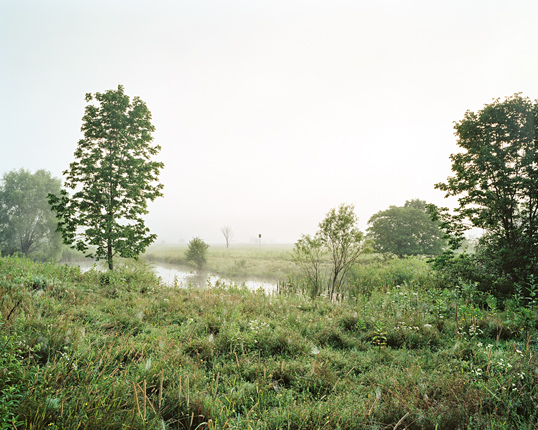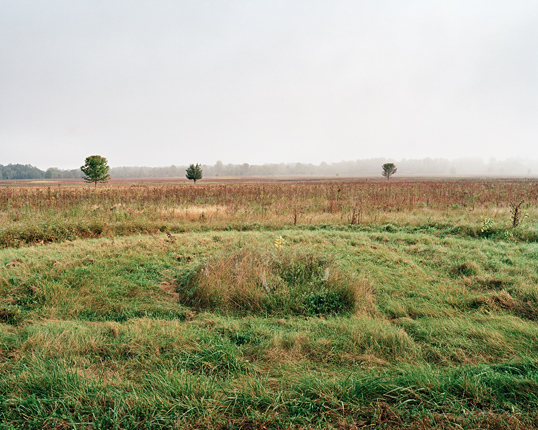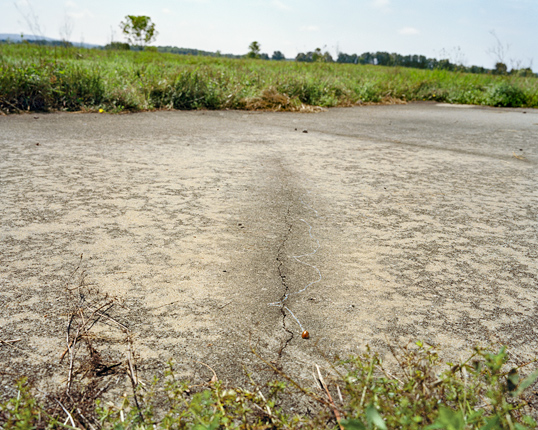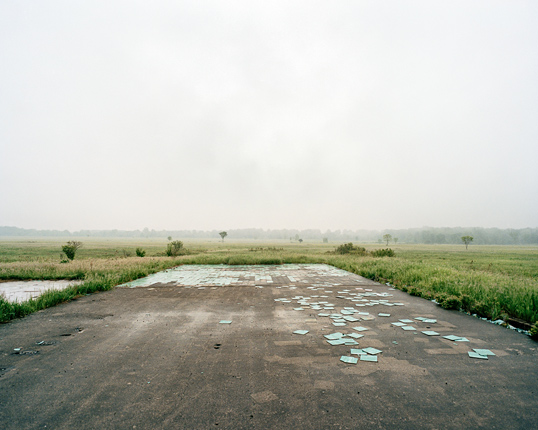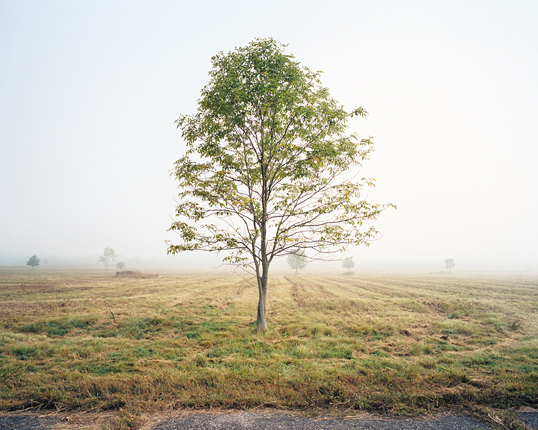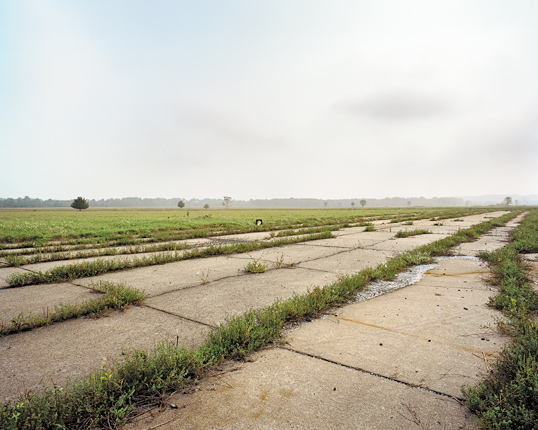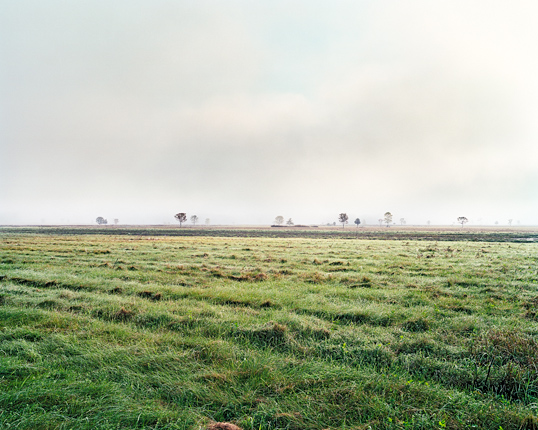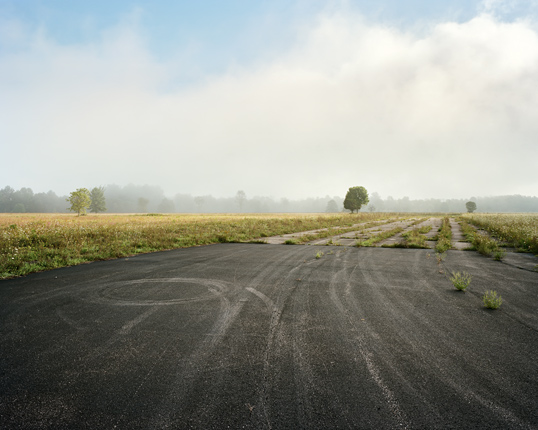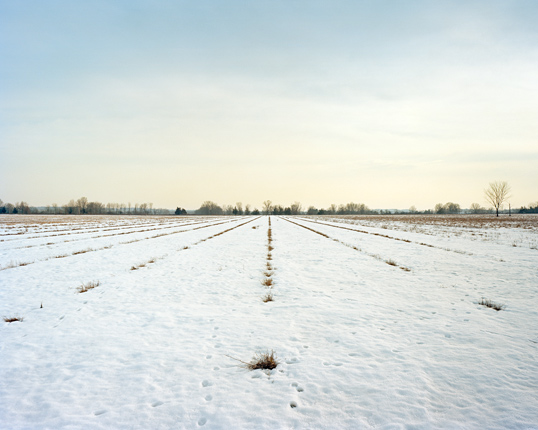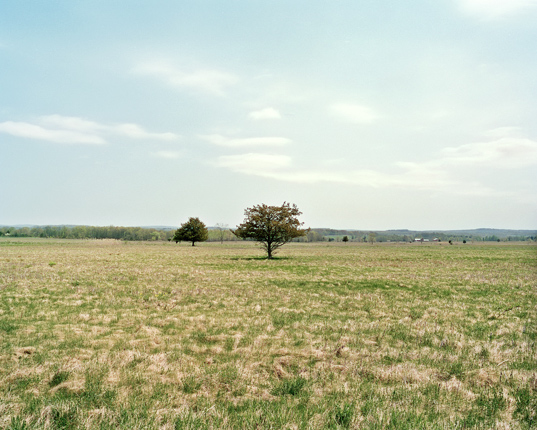In the 1940s, a wetland was filled and leveled to create an airstrip. An artificial grassland was born. Over time the original trees and plants of the wetland returned only to be cut back by mowers and grazing animals. In the 1990s, the abandoned airstrip became theShawangunk Grasslands National Wildlife Refuge. Now the runways crumble as plants sprout through cracks in the tarmac, and the sun, rain, and snow take their toll. Mowers still cut the grass to hold back the succession to forestland. From the outside world, development, changing agricultural practices, and habitat loss slowly press on its borders.
Grassland exists in a hybrid state. Like an imitation of a natural landscape, it attempts to be something that it never was, and canʼt be without constant intervention. The view across it’s mowed plain is a panorama of policy; of decisions made in faraway offices where flatness and straight lines flow from an engineerʼs pen rather than from some natural process. Trees appear like plots on a map, isolated in Grasslandʼs vastness, only at the edges allowed to grow unchecked. One year this half gets mowed, the next year that half.
Photographing at the grasslands I started to feel like an explorer on an expedition, and began to see Grassland as if it was a land in and of itself. A land whose borders, features, topography, and inhabitants were all by products of and defined by our culture’s relationship with nature and the environment. An archeology of the present, the images depict the landscape of this time–managed but wild, planned yet unpredictable, expressed not through traces that have left their mark for centuries or millennium, but through phenomena that are more fleeting and ephemeral.

